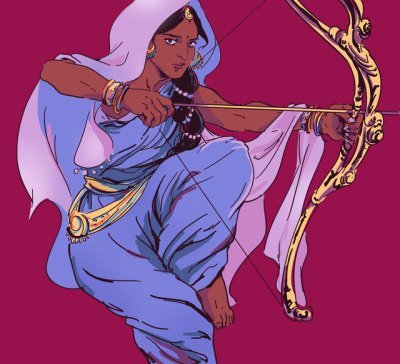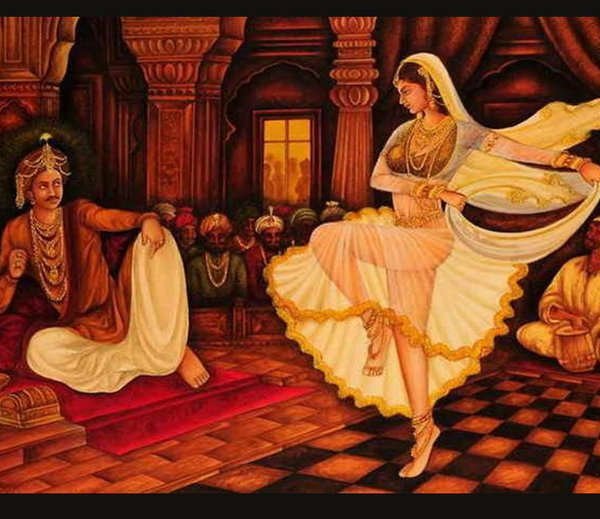Arjuna’s Gender Journey: Ancient India’s Blueprint for Modern LGBTQ+ Acceptance in 2025
While the world debates LGBTQ+ rights in 2025, ancient Indian mythology was already writing the playbook for gender fluidity millennia ago. Arjuna’s transformation into Brihannala isn’t just an epic talent’s a powerful reminder that India’s cultural DNA has always celebrated the full spectrum of human identity, long before modern terminology gave it names. Beyond Binary: When Epic Heroes Transcended Gender
Traditional Hindu literary sources do not speak of homosexuality directly, but changes of sex, homoerotic encounters, and intersex or third gender characters are often found both in traditional religious narratives such as the Vedas, Mahabharata, Ramayana and Puranas, proving that queer representation in Hindu mythology wasn’t tokenistic it was foundational.
The Hindu canon accepts queer behaviour be it crossdressing, sexual fluidity or homosexual intercourse as perfectly natural. Nowhere is it mentioned as a crime or sin or with any negative overtones. This ancient wisdom feels revolutionary in 2025’s context, where LGBTQ+ rights in India continue evolving toward fuller acceptance.
The story of Arjuna’s gender transformation serves as more than mythological entertainment it’s a cultural blueprint for understanding identity as fluid, powerful, and divinely ordained.
The Brihannala Chronicles: A Hero’s Gender Journey
When Arjuna refused her amorous advances, the nymph Urvashi cursed Arjuna; he would become a “Kleba”, a member of the third gender. Krishna assured Arjuna that this curse would serve as the perfect disguise for Arjuna during his last year of exile.
But here’s where the story gets fascinating: what appeared as punishment became empowerment. As Brihannala, Arjuna didn’t hide in shame he excelled. Teaching dance and music to Princess Uttara, he embodied the grace, knowledge, and cultural sophistication that Indian tradition has always associated with genderfluid expression.
The transformation wasn’t depicted as a loss of masculinity but as an expansion of human potential. Arjuna’s year as Brihannala proved that authentic identity in ancient India wasn’t about conforming to rigid categories but about embracing the fullness of one’s capabilities.
“The traditional stories and myths are often more accepting towards gender fluidity and diverse sexualities than contemporary interpretations might suggest.” Modern mythological interpretations for 2025
The Arjuni Connection: Love Beyond Gender
The Padma Purana offers an even more profound narrative: Arjuna becomes a beautiful woman called Arjuni and Arunya in a fascinating tale pregnant with profound mystic teachings. This transformation wasn’t driven by curses or external forces but by Arjuna’s desire to understand Krishna’s relationships with the Gopis.
When Arjuna learned about the 108 go pikas in Vrindavan and their unconditional devotion to Krishna, he chose to experience that divine love from their perspective. This voluntary gender transformation represents something revolutionary: love and spiritual connection transcending gender boundaries.
The Arjuni story suggests that the highest forms of devotion, friendship, and spiritual understanding require the ability to experience different perspectives including different gender expressions.
2025’s Lessons from Ancient Wisdom
Pride Month 2025 in India finds new relevance in these ancient narratives. The polytheistic religion of Hinduism has a long tradition of gender fluidity and queer identity as reflected in its deities and scriptures, offering contemporary LGBTQ+ communities in India powerful cultural precedents for their lived experiences.
Queer characters in Indian mythology are not restricted to tokenistic representations but are crucial in taking important narratives forward and even celebrating them. This isn’t about retrofitting modern concepts onto ancient stories it’s about recognizing the sophisticated understanding of human diversity that Indian culture has always possessed.
Modern interpretations of these stories serve multiple purposes:
- Cultural reclamation for LGBTQ+ Indians seeking roots in their heritage
- Educational tools for breaking down contemporary prejudices using traditional wisdom
- Spiritual frameworks that honour diverse expressions of identity and devotion
- Political arguments supporting legal and social equality based on cultural precedent
- Artistic inspiration for contemporary Indian creators exploring gender themes
- Community building through shared cultural narratives that celebrate diversity
Beyond Mythology: RealWorld Applications
Contemporary queer spaces in India are increasingly drawing from these mythological precedents. Performance artists create works like “Brihannala: A Myth, A Journey, A Dance conversation” that use Arjuna’s story to explore modern gender experiences.
Hindu temples and LGBTQ+ advocacy groups are finding common ground in celebrating these ancient stories, proving that tradition and progress aren’t opposites they’re allies. A lot of Hindus believe in the idea of Brahman, a genderless absolute, and in the idea of the soul having no gender, providing theological support for gender-inclusive interpretations.
Educational institutions are incorporating these stories into inclusive curricula, showing students that Indian cultural values have always embraced diversity. The result? Young people discovering that being LGBTQ+ isn’t foreign to Indian culture it’s foundational to it.
The Krishna Arjuna Legacy: Friendship Without Limits
The relationship between Krishna and Arjuna offers another powerful model: friendship that transcends conventional boundaries. Whether as warrior and charioteer, guru and disciple, or divine and mortal, their bond represents love that can’t be contained by simple categories.
When Arjuna becomes Arjuni to understand Krishna’s relationships better, it speaks to the lengths true friends go to understand each other’s experiences. In 2025’s context of allyship and LGBTQ+ support, this ancient example provides a template for how cisgender people might approach understanding transgender and genderfluid experiences.
Reclaiming Our Heritage
The 2025 LGBTQ+ movement in India isn’t importing foreign concept sit’s reclaiming indigenous wisdom. Someone referencing a random unverified quote off of their scriptures, and stamping it to be ‘sinful’, but we question is it really? The answer, found in stories like Arjuna’s transformations, is a resounding no.
These mythological narratives offer something precious: cultural belonging for LGBTQ+ Indians who’ve been told their identities are Western imports. Arjuna’s story proves that gender fluidity, chosen identity, and love beyond conventional boundaries aren’t modern inventions they’re ancient Indian values.
The future of LGBTQ+ acceptance in India isn’t about abandoning traditionist’s about returning to the sophisticated, inclusive understanding of human diversity that our ancestors already knew. Arjuna showed us the way; we’re just finally catching up.





